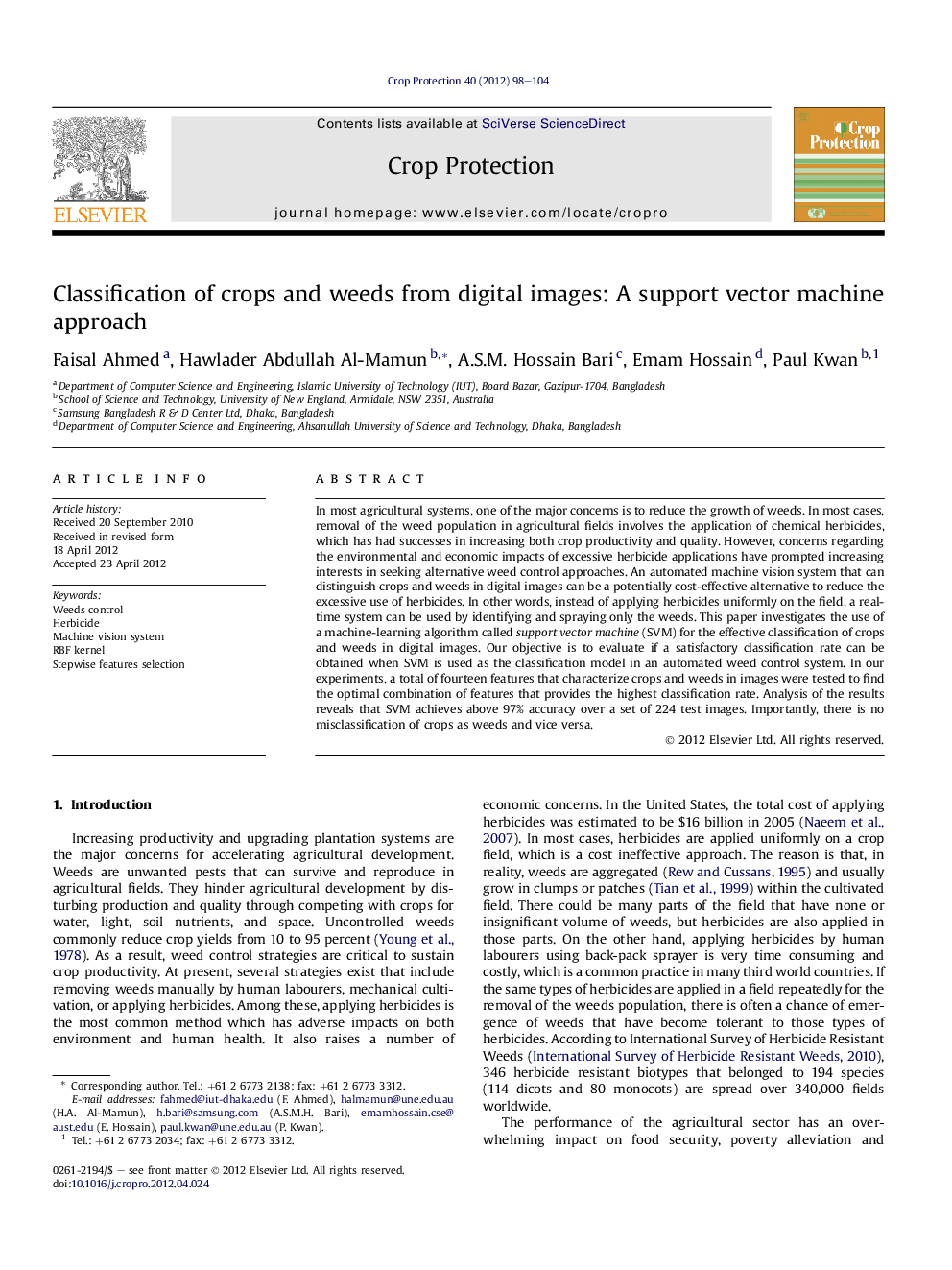| Article ID | Journal | Published Year | Pages | File Type |
|---|---|---|---|---|
| 4506322 | Crop Protection | 2012 | 7 Pages |
In most agricultural systems, one of the major concerns is to reduce the growth of weeds. In most cases, removal of the weed population in agricultural fields involves the application of chemical herbicides, which has had successes in increasing both crop productivity and quality. However, concerns regarding the environmental and economic impacts of excessive herbicide applications have prompted increasing interests in seeking alternative weed control approaches. An automated machine vision system that can distinguish crops and weeds in digital images can be a potentially cost-effective alternative to reduce the excessive use of herbicides. In other words, instead of applying herbicides uniformly on the field, a real-time system can be used by identifying and spraying only the weeds. This paper investigates the use of a machine-learning algorithm called support vector machine (SVM) for the effective classification of crops and weeds in digital images. Our objective is to evaluate if a satisfactory classification rate can be obtained when SVM is used as the classification model in an automated weed control system. In our experiments, a total of fourteen features that characterize crops and weeds in images were tested to find the optimal combination of features that provides the highest classification rate. Analysis of the results reveals that SVM achieves above 97% accuracy over a set of 224 test images. Importantly, there is no misclassification of crops as weeds and vice versa.
► A classification model based on SVM is proposed to classify crops and weeds in fields. ► A set of nine features was found that provides the best classification rate. ► SVM achieved above 97% accuracy over a set of 224 test images. ► There was no misclassification of crops as weeds and vice versa.
